Multi-qubit circuits realized with cold atom arrays.
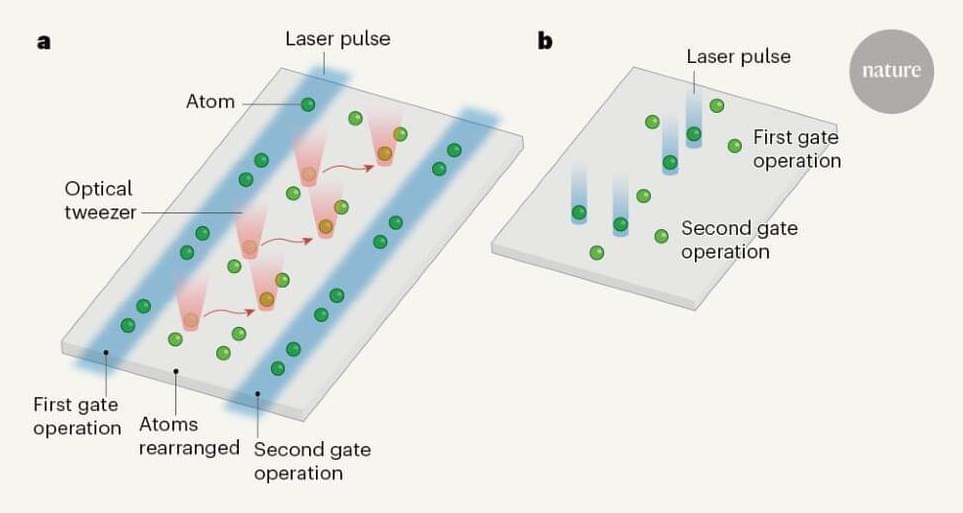

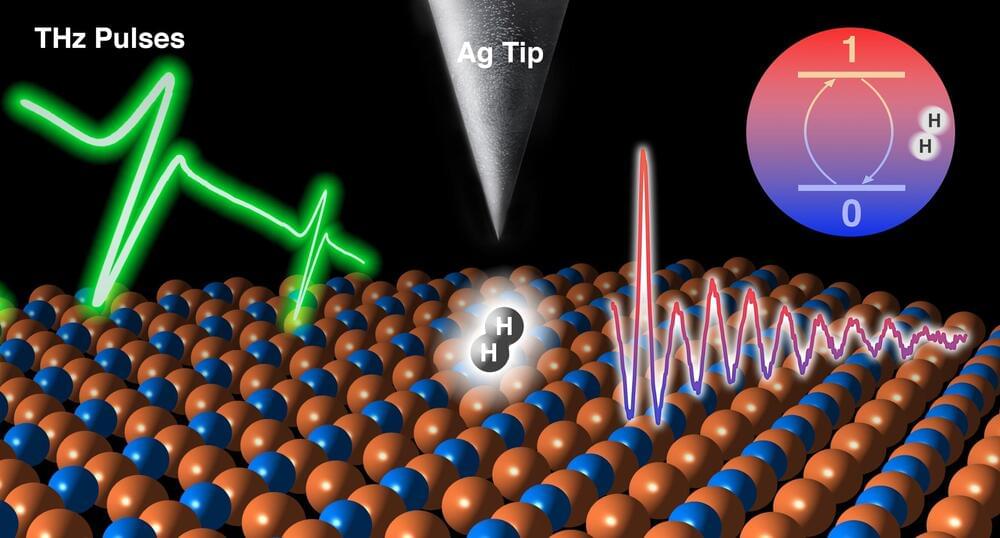
Physicists at the University of California, Irvine have demonstrated the use of a hydrogen molecule as a quantum sensor in a terahertz laser-equipped scanning tunneling microscope, a technique that can measure the chemical properties of materials at unprecedented time and spatial resolutions.
This new technique can also be applied to analysis of two-dimensional materials which have the potential to play a role in advanced energy systems, electronics and quantum computers.
Today in Science, the researchers in UCI’s Department of Physics & Astronomy and Department of Chemistry describe how they positioned two bound atoms of hydrogen in between the silver tip of the STM and a sample composed of a flat copper surface arrayed with small islands of copper nitride. With pulses of the laser lasting trillionths of a second, the scientists were able to excite the hydrogen molecule and detect changes in its quantum states at cryogenic temperatures and in the ultrahigh vacuum environment of the instrument, rendering atomic-scale, time-lapsed images of the sample.

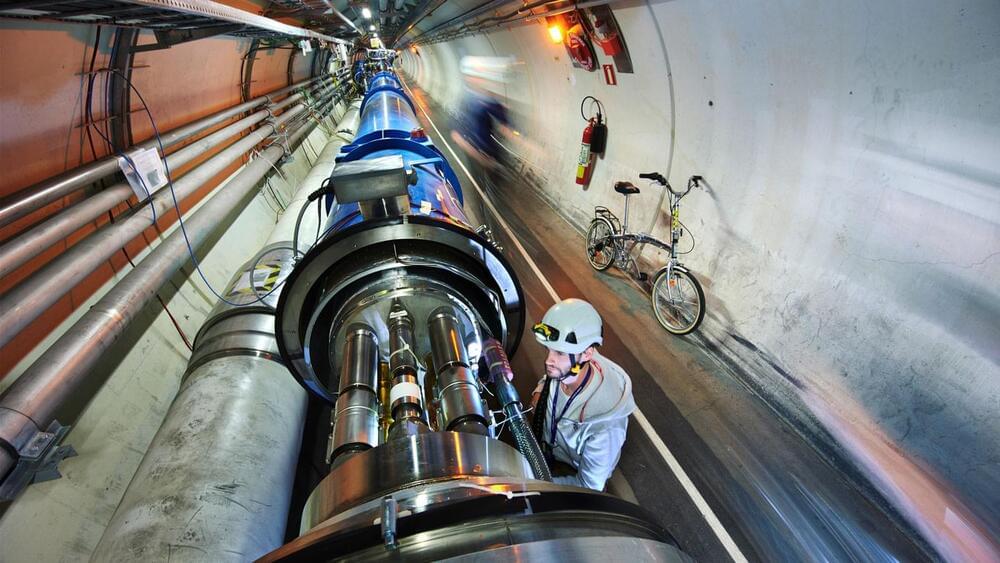
Scientists shut down the particle accelerator in 2018 to allow for upgrades (SN: 12/3/18). On April 22, protons once again careened around the 27-kilometer-long ring of the Large Hadron Collider, or LHC, located at the particle physics laboratory CERN in Geneva.
The LHC is coming out of hibernation gradually. Researchers started the accelerator’s proton beams out at relatively low energy, but will ramp up to slam protons together at a planned record-high energy of 13.6 trillion electron volts. Previously, LHC collisions reached 13 trillion electron volts. Likewise, the beams are starting out wimpy, with relatively few protons, but will build to higher intensity. And when fully up to speed, the upgraded accelerator will pump out proton collisions more quickly than in previous runs. Experiments at the LHC will start taking data this summer.
Physicists will use this data to further characterize the Higgs boson, the particle discovered at the LHC in 2012 that reveals the source of mass for elementary particles (SN: 7/4/12). And researchers will be keeping an eye out for new particles or anything else that clashes with the standard model, the theory of the known particles and their interactions. For example, researchers will continue the hunt for dark matter, a mysterious substance that so far can be observed only by its gravitational effects on the cosmos (SN: 10/25/16).
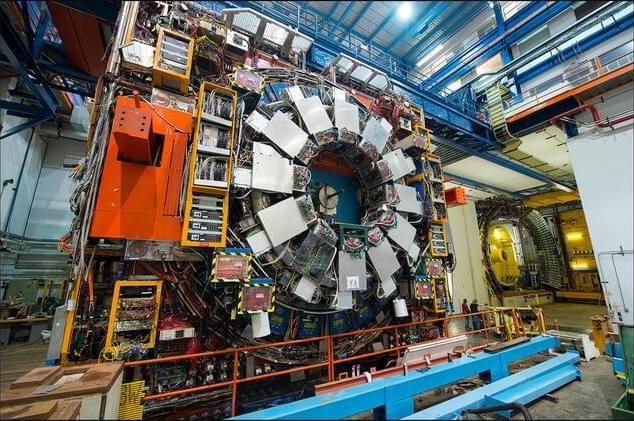

Circa 2015 This is basically amazing leading to speeds in a computer basically infinite.
Quantum gases of atoms and exciton-polaritons are nowadays a well established theoretical and experimental tool for fundamental studies of quantum many-body physics and suggest promising applications to quantum computing. Given their technological complexity, it is of paramount interest to devise other systems where such quantum many-body physics can be investigated at a lesser technological expense. Here we examine a relatively well-known system of laser light propagating through thermo-optical defocusing media: based on a hydrodynamical description of light as a quantum fluid of interacting photons, we investigate such systems as a valid, room temperature alternative to atomic or exciton-polariton condensates for studies of many-body physics.
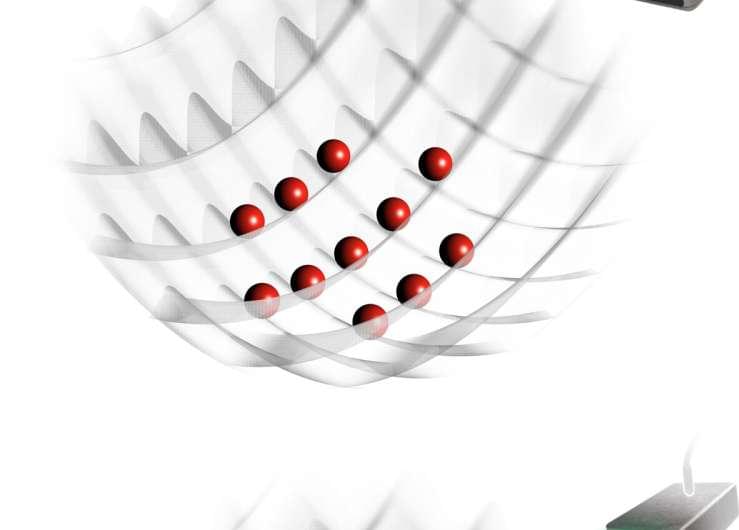
Polaritons are quasiparticles that are formed when photons couple strongly with excitations of matter. These quasi-particles, which are half-light and half-matter, underpin the functioning of a wide range of emergent photonic quantum systems, including semiconductor-based nanophotonic devices and circuit quantum electrodynamic systems.
Researchers at Stony Brook University have recently introduced a novel polariton system in which the matter excitation is replaced by an atom in an optical lattice and the photon by an atomic matter wave. This system, introduced in a paper published in Nature Physics, results in matter-wave polaritons, and could open interesting possibilities for the study of polaritonic quantum matter.
“A few years ago, we became interested in the idea of using ultracold atoms to simulate the dynamical behavior of quantum emitters,” Dr. Dominik Schneble, head of the team of researchers who carried out the study, told Phys.org. “It turns out that it is possible to build an artificial atom that spontaneously emits matter waves, in much the same way as an atom spontaneously emits a photon (as described by the so-called Weisskopf-Wigner model).”

Bart Blommaertsif it helps. But don’t cut internet cables with that thing!!
Andreas StürmerFinally. Is it going to be a rail or car tunnel?
Eric KlienAdmin.
Andreas Stürmer Rail.
Jose Ruben Rodriguez Fuentes shared a link.
A team of researchers at the University of Manchester has created a molecular motor that consumes chiral fuel to drive rotation around a single covalent bond. In their paper published in the journal Nature, the group describes their work in developing a chemically powered directionally rotating motor and why they believe their efforts will result in similar systems being developed with other materials.
Ron FriedmanThink outside the box. Most people don’t need a car for the sake of having a car.
Most people need a comfortable, quick and cheap way of going from A to B. So, Robotaxi could be the ideal solution for most people most of the time.… See more.
Jerry AndersonProbably not, because new batteries that contain other elements, I think they are saying Sulfur-Lithium batteries are more efficient last longer, and don’t require recharging as often… There are bound to be other breakthroughs.
4 Replies.
View 3 more answers.
Shubham Ghosh Roy shared a link.
Controlled activation of water molecules is the key to efficient water splitting. Hydrated singly charged manganese ions Mn+(H2O)n exhibit a size-dependent insertion reaction, which is probed by infrared multiple photon dissociation spectroscopy (IRMPD) and FT-ICR mass spectrometry. The noninserted isomer of Mn+(H2O)4 is formed directly in the laser vaporization ion source, while its inserted counterpart HMnOH+(H2O)3 is selectively prepared by gentle removal of water molecules from larger clusters. The IRMPD spectra in the O–H stretch region of both systems are markedly different, and correlate very well with quantum chemical calculations of the respective species at the CCSD(T)/aug-cc-pVDZ//BHandHLYP/aug-cc-pVDZ level of theory. The calculated potential energy surface for water loss from HMnOH+(H2O)3 shows that this cluster ion is metastable. During IRMPD, the system rearranges back to the noninserted Mn+(H2O)3 structure, indicating that the inserted structure requires stabilization by hydration. The studied system serves as an atomically defined single-atom redox-center for reversible metal insertion into the O–H bond, a key step in metal-centered water activation.
